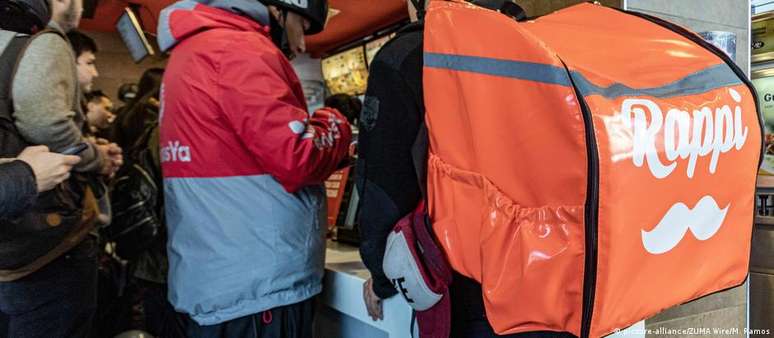In an interview, the sociologist analyzes how a large contingent of workers in a situation of insecurity reshapes global trade unionism and how this phenomenon affects right-wing white nationalism. The adhesion of workers to extremist projects, such as that of Donald Trump, in the United States United States, and also with Jair Bolsonaro, in Brazil, is the result not only of the politics of resentment of the white working class, but, above all, of the deterioration of living conditions caused by the new organizations of work and society, according to the analysis by sociologist Ruy Braga, from the University of São Paulo (USP).
Author of The Anguish of the Precarious Workplace, the last book in a trilogy on the formation of the global precarious work force, now published by the publisher Boitempo, Braga states that with the advent of new technologies, inequality among workers has deepened, leaving some more exposed to the risk of economic exploitation.
The sociologist underlines, however, that despite the crisis of representation affecting traditional unions, the current context is causing a new wave of unions to emerge, with a strong centrality in the communities where these workers live, such as the homeless movement. who fights for civil rights in a broader context.
In an interview with DW Braga also comments on the expansion of right-wing white nationalism and underlines the need to recover the democratizing meaning of the working class struggle on a global scale.
DW: What is the meaning of the global precariat that you analyze, both in Brazil and in the United States?
The global precariat is that sector made up of workers in precarious living and working conditions who permanently experience growing economic exploitation. This occurs for example with the development of these technology companies, industry 4.0, mass data processing, delivery applications.
This phenomenon has produced a deepening of economic exploitation, both through the intensification of work rhythms and through company outsourcing strategies. In other words, it is everything that weakens and fragments the world of work, workers, their trade union and political representation. And all this implies, for example, worse conditions for negotiating wages, working conditions and so on.
During the pandemic, essential workers became political subjects, because they began to take on all the risks and, at the same time, continued to be underpaid and this is what has largely driven this round of strikes in the United States and also the formation of new unions.
Here too in the Brazilian case there was a typical example, which was the collapse of the application, the collapse of the employer, which was exactly the same dynamic in the same context.
How do you analyze this new trade unionism that is emerging in the USA? Is there a parallel with Brazilian trade unionism, which was so strong in the 1980s, but is now experiencing a crisis of representation?
The dynamics are different. However, you may notice a problem. Today in the United States there is a strong presence, a strong centrality of the communities where workers live and reproduce, especially temporary workers, those who I usually call precarious workers.
It’s easy to see this if you think, for example, about this overlap between the Black Lives Matter movement, nationalized after the Ferguson uprising, and the emergence of this new social justice unionism, as I called it in the book, which begins thrive from this activist experience.
They ended up working in this process of reorganizing workers in the workplace, in this more union and more traditional context. So this overlap is fundamental.
In Brazil, for example, we have observed, from the mid-2010s onwards, strong, important and significant growth in the movement of homeless workers. There is the same dynamic, communities are reorganizing themselves, obviously with a different agenda from that of traditional unions, but with the characteristics or identity of the workers.
How has the phenomenon of precarious employment helped the emergence of right-wing white nationalism in the United States, represented there by Donald Trump, even copied in Brazil, with Jair Bolsonaro?
What I try to present in the book is an attempt to deconstruct a standard narrative, which has become very popular, according to which the politics of white working-class resentment explains the advance of authoritarian nationalism, Trumpism and things like that, like Bolsonarism.
Indeed, Trump is arguably the most popular Republican politician in the country. The question is: do the politics of white resentment and hatred explain the rise and popularity of Trumpism? My argument is that no, it explains part of the story, not the key part.
The post-2008 economic crisis, the opioid epidemic that hits hard the small towns where this white working class lives, which experience an increase in social violence, has created a social crisis that has dismantled the way of life of this white working class , which is a rural lifestyle, a lifestyle in which proximity, intimacy, familiarity, the relationship with the environment, with nature are privileged. This is falling apart. These communities suffer, they are distressed.
It seems that economic policy still weighs much more than any other discussion taking place in large centres. It’s not that there isn’t racism, it exists, but the problem is whether racism explains the adherence of these workers to authoritarian nationalism, to this fanaticism, which in my opinion doesn’t happen.
Therefore, precarious work is a global phenomenon, including Brazil. What possible solutions to the crisis scenario for current workers?
We need to engage workers in a dialogue about democracy, and this involves less the workplace and much more the communities where these workers live. And these communities are more sensitive, more permeable to the practice of, for example, churches, or, let’s say, popular religiosity, which is, in the Brazilian or American case, marked by the action of these evangelical churches.
Politically progressive sectors must follow this model, that is, get closer to the working class and dialogue with the working class in the communities. And, from there, try to actually establish bridges with the world of organized work, with the unions, because it’s not even true that people don’t want job protection, they don’t want social protection, yes. But this is a conversation far removed from their lives.
Source: Terra
Rose James is a Gossipify movie and series reviewer known for her in-depth analysis and unique perspective on the latest releases. With a background in film studies, she provides engaging and informative reviews, and keeps readers up to date with industry trends and emerging talents.






